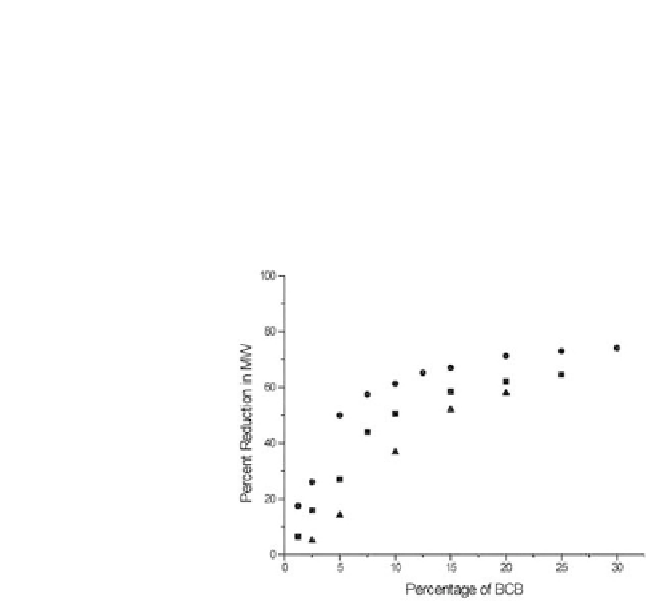Biomedical Engineering Reference
In-Depth Information
so far in the literature are polystyrene based and covalently
cross-linked. In this case, the size of the nanoparticle is basically
proportional to the molecular weight and inversely proportional to
the number of cross-links. Harth
et al.
carried out an extensive study
about the relationship between these properties in polymers built
on polystyrene (PS) cross-linked using benzocyclobutene (BCB)
chemistry, highlighted in Figure 2.3 [29]. Similar behaviour has been
identified in polymethyl methacrylate (PMMA) copolymers [36].
Figure 2.3
Variation in the percent reduction in molecular weight for the
PS nanoparticles with the mol % of BCB units in the starting linear polymer
for 44 K (
∑
), 110 K (
), and 230 K (
D
) series. Reproduced from ref. [29] with
permission.
The same tendency can be attributed to SNPCs formed from
macromolecules with PMMA backbone and supramolecular cross-
linking [34, 35]. It should be noted that these particles are larger than
similar ones made through covalent cross-linking (around 10 nm
in diameter), but additionally they are less dense [56]. In contrast,
SCNPs obtained covalently from polymers with bulky side groups do
not diminish in size when the number of links is raised, as is the case
of PS-based nanoparticles that display
tert
-butyloxycarbonyl (BOC)
protected amino moieties [28]. According to these results, it could
be foreseen that macromolecules with charged side groups would
also have the ability to form collapsed-coil polymers.
Nevertheless, the smallest SCPNs have been achieved using “click”
chemistry through the cross-linker mediated collapse method [46],
where the average diameter is around 1.5 nm in dry conditions. It is















Search WWH ::

Custom Search